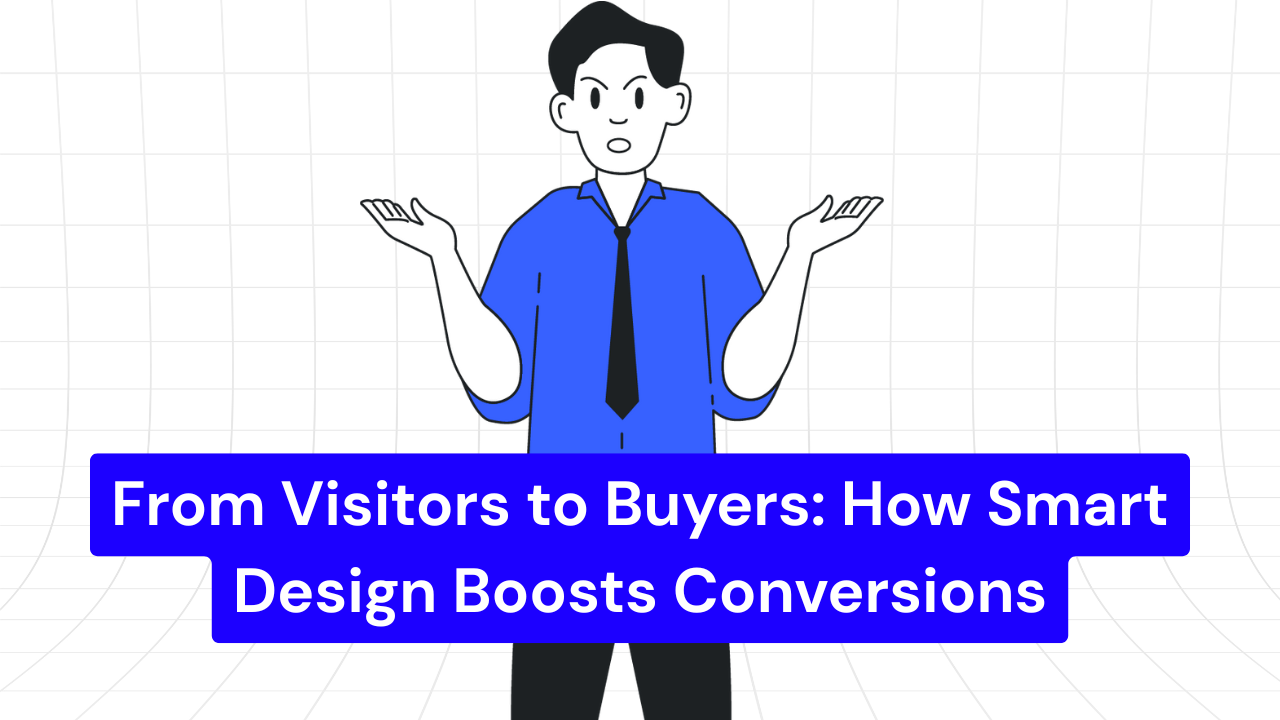From Visitors to Buyers: How Smart Design Boosts Conversions:
- Driving traffic to your website is only half the battle.
- The real success lies in converting those visitors into paying customers.
- And that’s where smart web design becomes a critical growth lever.
In this guide, we’ll break down how design choices directly impact conversions, backed by proven strategies you can apply to your business website.
First Impressions Decide Trust
According to studies, users take 0.05 seconds to form an opinion about your website. Credibility is immediately established by a simple, contemporary, and consistent design.
What to do:
- Use a professional, uncluttered layout.
- Stick to a consistent color palette and typography.
- Avoid stocky, low-quality images — invest in visuals that reflect your brand.
When trust is built quickly, visitors are more likely to continue exploring.
Navigation That Guides, Not Confuses
One of the main causes of website abandonment is unclear navigation. The design of your website should naturally direct users to the action they want to take.
Best practices:
- Keep the menu simple (5–7 items max).
- Highlight your key call-to-action (e.g., Get a Quote, Book a Call).
- Ensure important pages are no more than 2–3 clicks away.
Good navigation reduces friction and leads visitors directly to conversion paths.
Speed = Conversions
Not only is a slow website annoying, but it also reduces sales. A one-second delay can lower conversions by 7%, according to research.
How to optimize website speed:
- Compress images and videos.
- Use modern hosting and caching.
- Eliminate unnecessary plugins or scripts.
Faster websites deliver smoother user experiences, leading to higher engagement and sales.
Conversion-Focused Layouts
Design is functional, not ornamental. You can precisely direct attention where you want it with a well-structured layout.
Key elements:
- Clear and visible CTAs above the fold.
- Strategic use of white space to highlight important content.
- Visual hierarchy (headlines, subheadings, buttons) that guides the eye.
The easier it is for users to act, the more conversions you’ll see.
Leverage Social Proof
Before making a choice, visitors seek confirmation; social proof eliminates uncertainty and fosters immediate trust.
Examples to include:
- Testimonials and case studies.
- Client logos and certifications.
- Ratings, reviews, or awards.
When visitors see that others trust your business, they’re more likely to convert.
Mobile-First Design
With over 70% of web traffic now mobile, responsive design is non-negotiable.
Mobile-first principles:
- Large, easy-to-tap buttons.
- Simplified navigation for smaller screens.
- Fast-loading pages optimized for mobile data.
If your site isn’t mobile-friendly, you’re leaving conversions on the table.
Personalization with AI
Smart design in 2025 goes beyond static pages. AI allows you to personalize experiences in real time.
Examples:
- Dynamic content based on location or past behavior.
- AI-powered chatbots to answer visitor questions instantly.
- Personalized recommendations for services or products.
Personalized experiences create relevance, and relevance drives conversions.
Final Conclusion
Building trust, lowering friction, and encouraging visitors to take action are all goals of smart web design. Your website becomes a 24/7 sales engine when it incorporates speed, clarity, powerful calls to action, social proof, and personalization.
If your website is attracting visitors but struggling to convert them into buyers, it’s time for a design rethink. Our team specializes in building conversion-focused websites that drive measurable growth.
Still Have Confusion: -> Contact Us Now

